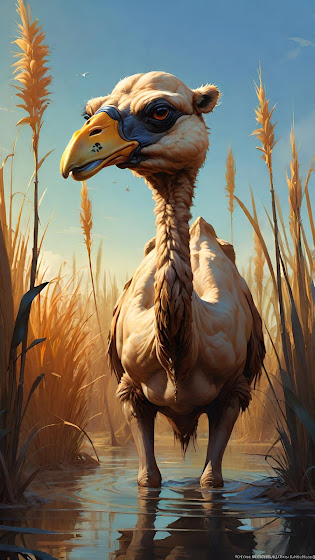AI Art in Game Development
In the initial 1.0 phase of
Tortured Earth, we approached the project with an idea, enthusiasm, and a
shoestring budget. One of my students was working on a comic book project with
another friend and, as happens with so many first attempts, it flaked out. He
was left with a large amount of artwork that really had no purpose. I was in
desperate need of A LOT of artwork.
I purchased the images from him
and used them throughout the book. Even his concept art and doodles found a
place in the book. To make up for the lack of art, we used colorful background images
which alluded to the general theme of the core storyline. It was a graphics
design tactic suggested to me by a friend who majored in the topic.
When the book was released, we
immediately underwent criticism for the boldness of the pages, color choices of
the text blocking, and lack of illustration. There was no mercy from the
critics for our lack of resources. There was no understanding that this was a
first print or the fact we were on a budget. Little was said of the content or
the fact that the game was functional and valid.
As soon as the first edition was
released, I started looking for artists. I vowed that for our second release,
we would have illustrations for all creatures and races. It took five years to
accumulate the art needed to produce the next book and an untold number of
dollars. The art purchased ranged from $35 per image to $125 per image. Although
this may not seem like a lot, the supplemental books boasted 256 creatures and the
core rulebook has images on nearly half of the pages (150 additional images).
That’s a whopping $14K on the low end. Please keep in mind, the images we
purchased were black and white, were of the creature only, and required no
background illustrations. The second edition was in black and white because the
images we had were black and white.
Two years after the release, the
first AI art generators were opened to the public. Their ability to quickly
produce art which represented the creatures needed was glitchy at best. As the
software adapted and learned better styles, the quality of the images generated
improved. Originally, the image quality was so glitchy that we would only use
the images as concept art to send to someone for either refinement or
reference. Newer generators have advanced to the point they are producing
images of much higher quality.
With this stated, I do believe in
supporting the artist community. I still purchase art from individuals and use
it in game design. Even bad art can be modified using a generator to produce higher
quality images. The issue I’m finding is artists don’t want to sell art to me
because the know I use AI generators.
The use of the generators has
freed a large chunk of our budget to develop new aspects of our company. Having
a generator create a human-rabbit hybrid is easy and removes that from an
artist’s plate. Attempting to use generators to create a specific creature that
is atypical or has very specific characteristics is difficult and requires an
artist for those projects. Due to the reduced amount of art required for purchase,
I don’t flinch at having to pay extra for those full color images and incredibly
specific backgrounds.
The other aspect of art generators
is their speed. Many of the artists I deal with are hobbyists at best. They
work on a few designs, have prints made of their work, and bring them to shows.
Months will pass before we hear of progress on their projects. Artists taking
commissions are more reliable but can become inundated with projects just to
keep themselves afloat. Most have a difficult time meeting deadlines and
produce a few pieces of art before they either lose interest or burn out.
Game development requires large
amounts of art. The rate of demand dictates we either have a vast bank of art
in reserve or have access to a large supply on demand. Casting 256 creature
descriptions among a group of artists translates in hours of independent
attention to each member of the group. It is the only way to ensure the image
quality matches the requirements. I have had a few artists work with me capable
of translating the written word into a visual image. Unfortunately, those
artists are few and far between. Most artists want to take liberties with the description
and create something they find appealing. That’s not the job and few ‘get it’.
For the game developers out
there, I encourage you to find an art generator you can reliably operate. If
you have an artist on hand that can work from those images, let them translate
the image into something you like. If it’s an image that accurately depicts
what you need, use it.
For the artists out there, put
your art out there. As a game developer, be assured there is a developer out
there who would love to get their hands on it. There is nothing to replace the
human perspective on a description. Despite my use of generators, I will always
have a place for human-produced art. The argument isn’t for the quality of the
piece. It’s one for the quantity art pieces and rate at which they must be
produced.
As always, thanks for reading!
K. B. Kidder
www.torturedearth.com for more information about our game.


.jpeg)

Comments
Post a Comment